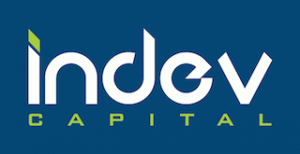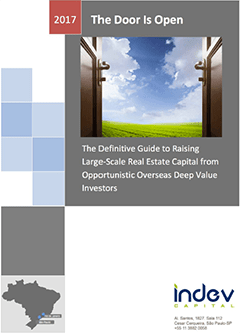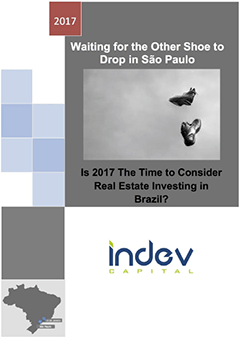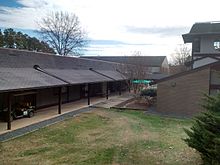
Approximate location where “Keith” said, “Now It Matters….”
In high school, I will admit that I had some pretty geeky friends. In full disclosure, I may not have been the coolest kid either. One of my great memories from high school is of my peer group in Latin Class. These guys were a really smart, eclectic, and I will say proudly geeky peer group. Together, we formed a Latin Team and all went to a Latin oratory contest in 1986 at Wake Forest University. Never before had so many eclectic and geeky high school kids, hundreds, been in the same auditorium together speaking a language that no one spoke. It was decidedly in the uncool category of things to do. My best friend in Latin class was a guy who we will call Keith. Two years earlier, before we started high school, Keith said something that was so brilliant and profound I still remember it to this day.
Keith was obviously one of the smartest and most understated guys in our high school. We sat next to each other in our eighth grade Life Science class. Whenever a written homework assignment was due and the teacher came by to collect it, like clockwork Keith would start to sweat, become completely red, shuffle his papers, get nervous and say something ridiculous. There was always an interesting story: his dog had eaten his homework, he left it in the car, his little brother spilled something on it, he left it in his book bag that was in his locker… the stories were countless. He was brilliant so he always received A’s on tests but rarely did his homework.
However, in the fall of 1984, on our first day of high school, he said something very profound. I will never forget the determined smile on his face when he said “Joey (my nickname as a kid), Now It Matters!” What did he mean and why is this important?
The purpose of this newsletter
The newsletter will outline a specific investment strategy that has reached a very special moment in its evolution. There is an opportunity to significantly reduce the largest risks of the investment strategy and still achieve returns in the 35%+ to 40%+ IRR. This is possible through many factors including, but not limited to, historically limited financing for the sector, strong core demand, and multiple large national and small local players in the specific target sector who are not in a financial position to react, make investment decisions, and take advantage of the opportunity. The Brazilian government’s support of another segment of the real estate market has left this sector with very high profits and, at least for now, less investor competition. Let’s see why “Now It Matters.”
Ceteris Paribus

In Latin class, Keith and I learned the phrase Ceteris Paribus. In English, ceteris paribus could be translated as “all other things being equal.” Keith, brilliantly, knew that colleges only asked for transcripts and recommendations based on your performance from ninth grade onward. Up until 9th grade (“when it mattered”), while he did well academically due to his very high IQ, he focused on minimal effort for maximum return.
Our hero Keith, and any rational person with an information advantage, would only desire to do homework or spend time or money when it had a significant potential impact on his future life or profits, ceteris paribus. In addition, for an investor, “usually the higher the rate of return, the higher the risk,” ceteris paribus. However, what if you were able to be like our hero Keith and take advantage of a unique situation? What if your capital had a distinct advantage in information, positioning, timing, and price?
In 1984, our hero Keith was spending his homework time on computers, went to a relatively famous school in New Haven, CT (hint: it begins with a Y) and became a top executive / software programmer for a very wealthy man named Bill in the software industry in Seattle. How can we have this type of result, Opportunistically High IRRs and Equity Multiples for our deep value investments?
Pickup Truck, Hard Hat, Box of Tools
 In the USA and Canada, most single family housing is developed by residential homebuilders. These companies not only create the subdivision layout and infrastructure, the lots, but also build the single family homes. This industry is fairly advanced; in fact, the largest public homebuilder, D.R Horton, sold 36,736 completed single family units in 2015 (Source: Builder Online).
In the USA and Canada, most single family housing is developed by residential homebuilders. These companies not only create the subdivision layout and infrastructure, the lots, but also build the single family homes. This industry is fairly advanced; in fact, the largest public homebuilder, D.R Horton, sold 36,736 completed single family units in 2015 (Source: Builder Online).
The large home builders build homes in subdivisions on a very large scale. The top ten homebuilders control approximately 25% of the total share of new single family homes. However, it is still a very fragmented market in many locations in the USA (for example, there are homebuilders in Duplin County, NC subject of our last newsletter). This model works in the USA to a large extent based on the ability of the homeowners to finance the single family home. Without this “take out” financing, the bank would not finance the construction and/or the land purchase. Importantly, this does not exist in the single family market in Brazil and that makes all the difference.
Quick Aside
This fragmentation and the countless small homebuilders in the USA are a celebration of the USA entrepreneurial spirit. In another life, I was a president and an owner, with a group of investors, of a residential home building supplier in the USA. During that time, I learned that to become a contractor or small builder what was required was, “a pickup truck, a box of tools, a strong stomach, an understanding spouse, and a bad temper….. Some had started with less…” I love that quote but cannot remember who I heard it from.
The Loteamento Industry – Subdivision Lot Industry in Brazil
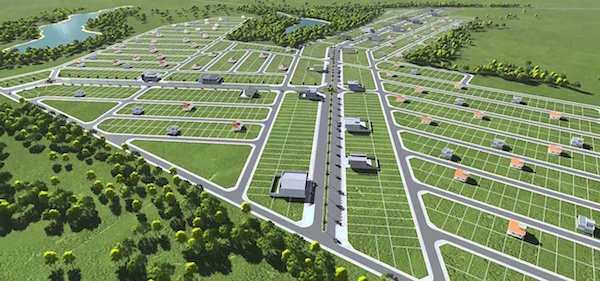
To be clear, for interested investors we will be publishing a detailed white paper on this investment opportunity; however, let’s spend some time together now understanding why “Keith” would like this investment strategy.
The first item to notice about subdivision development in Brazil is the separation of the lot developer and the actual home builder. Among many reasons, perhaps the largest difference is that financing does not exist for single family homes in Brazil. One key reason for this difference is the lobbying power of Brazil’s version of the Pulte, Centex, Beazer, and Toll Brothers. The largest developers of vertical multi-family for-sale apartments are a very powerful lobby in Brazil. This lobbying has effectively blocked banks from financing single family home development.
For single family subdivisions (lot sales), the lot developers finance the land purchase usually with a “swap” or trade of future revenue and their ability to wait for the payments upon sales of the project to pay for lot development. There is no bank debt for the lot developer’s infrastructure development. In addition, there is no long-term mortgage payment finance for the single family home construction on a lot. Therefore, the way the market works is that developers pre-sell lots, use this money to finance infrastructure, and receive payments for the land over ten years as the families build the homes as they can afford to invest. Importantly, for our investor readers, there is long-term financing for the cash flow stream of these lot payments. Remember, our hero “Keith” is with us on this trade!
How did this market evolve?
 In 1937, President Getúlio Vargas enacted Presidential Decree Number 58 that regulates the commercialization of plots of land in Brazil. However, only in 1979 was a law created to provide guidelines for municipal approvals, uses, regulations, etc. After this law, 6766, was enacted, loteamento or lot development became a significant business in Brazil.
In 1937, President Getúlio Vargas enacted Presidential Decree Number 58 that regulates the commercialization of plots of land in Brazil. However, only in 1979 was a law created to provide guidelines for municipal approvals, uses, regulations, etc. After this law, 6766, was enacted, loteamento or lot development became a significant business in Brazil.
Urbanization of the Brazilian economy was the main driver of the loteamento expansion beginning in the 1950s. However, in the last 15 years, the sector has developed due to buyer lifestyle desires. An enclosed residential area with a controlled checkpoint, usually a manned gate, with neighbors of the same social and economic level was and is very attractive in Brazil.
A closed condominium is a controlled environment where families can allow their children to play in the streets, share community areas that often include a pool, and where there are no internal gates or walls between homes. This may be the way that the large majority of people reading this newsletter were raised. In emerging market nations, sometimes this is hard to simulate due to significant class and income differences. Security and recreation are main demand drivers for many lot development areas, particularly for upper to middle-income families.
For lower-income lot developments, the motivation for purchasers is different. Lower-income subdivisions do not include gated walls, extra security, maintenance, gardeners, etc. Instead, for lower-income families, a lot with the subsequent self-financed home construction is the only real estate product that can be acquired with financing, with the exception of Minha Casa Minha Vida, a program largely restricted to buying a small apartment on the outskirts of large metropolitan areas. The developers played, and are still playing, the role of lenders to the lot purchasers.
The Lot Development Business Model
The process starts when a local land developer recognizes that a city, for various reasons (permits, population, roads, industry, etc.), is growing in a certain direction. This developer ties up land that has potential future value via option or purchase and begins working with the landowner and the municipality to obtain permits to build. Usually the land is farmland and/or vacant at this point.
The developer does not invest significant capital until approval, which can take up to five years, but does pay the costs of due diligence, architecture, projects, topography survey, and drilling/probe for environmental testing during the pre-approval period. Upon receiving municipal approval to build lots, the developer starts a pre-sale process determining if there is enough demand to launch. If the pre-sale process is successful, the developer launches sales of the project.
Sales Process
The purchasers of lots are individuals, usually from the surrounding area, who desire to build a single family home on the property. The payments are structured as fixed monthly payments, indexed by inflation, with an interest rate usually above 15% per year, nominal, over a ten to fifteen-year period. Now you are seeing why “Keith” likes this trade. If the developer has chosen the land correctly, the city has basically developed directly to his land and the sales demand is fairly strong. The developers low cost basis on the land combined with compounding interest adds up to a nice trade.
Credit and Defaults
In residential apartment towers, the largest part of the residential business, if a buyer has purchased a unit and is making payments but eventually decides that he or she does not desire or cannot purchase, he or she has the right to receive 80% percent of the deposit back currently. During the downturn, the rate of “distratos” or failure to purchase for residential towers reached up to 40% in some projects.
The lot development business has a different dynamic. First, the payments and planning are much more gradual than the three-year residential apartment payments with increasing payments and large bullets at various milestones. As the payments are more gradual, even during the recession, the rate of failure has been around 10%, and the purchaser of the lot usually receives a lower percentage of their paid-in capital back than a residential buyer. This is an important difference that greatly affects the economics of the two businesses.
In Brazil, while there is little positive credit information, negative credit blocks the ability of the consumer to purchase many daily goods via credit so it is a huge disincentive to have late payments. This is particularly prominent in lower-income purchasers who need credit to purchase items on installment, a much more common practice in Brazil than in other economies.
Another factor to consider is that the purchaser of a lot is developing a home on the property. As the lot purchaser invests capital and time into building his or her home, it becomes a fairly important asset for the family. A default on the land loan would mean losing not only the land but the house on top of the land. Unlike a car or motorcycle that can be hidden, the land is readily available for creditors to execute their rights. This provides a significant deterrent to default.
Normally, lots have a strong increase in value as the infrastructure is developed. They are transformed from raw land to ready-to-build lots. Therefore, when a plot is taken back due to a default, developers can resell it for much higher prices. Traditionally, late payments over 90 days are 10% in the first 2 years. After lot owners start construction of their homes, usually in the second year, the late payments drop to 4%. True default rates are approximately 5% during the first two years of construction.
Infrastructure Development
Lot developers finance purchases of lots for 120 to 180 months. The lot developer’s goal is to pay for the construction/infrastructure of the lots via the payments during the first two years. The process involves earthwork, grading, paving, water supply, sewer, and power grids. There are experienced contractors in this industry. The process takes two years with 40% of the costs in year one and 60% of the costs in year two. Importantly, if sales for some reason are not adequate to cover these costs, the developer would need to raise capital from outside sources.
Actual Home Construction
Home construction starts after the infrastructure work is completed. The owner hires an architect and a builder. The owner purchases the building materials and completes the construction according to his or her budget per month. In lower-income communities, often multiple families will desire to live in a home and they all contribute savings and actually build a larger home. For lower-income buyers, this is a key benefit over the government-funded apartment purchase program which makes it difficult, if not impossible, to expand the apartment unit.
Profit Model – Getting Cash Back – Keith Comes Back
 There is a very well developed securitization business for these lot payments. Hence, investors are able to return 100% of their capital upon completion of construction and selling 80% of the units.
There is a very well developed securitization business for these lot payments. Hence, investors are able to return 100% of their capital upon completion of construction and selling 80% of the units.
Let’s provide a case study of 1000 lots. If 1000 lots are sold and receiving payments, the securitization company would securitize only 800 to 900 of the lots at a discount rate very similar or equal to the current interest rate charged by the developer. It is standard practice to leave 10% to 20% of the lots unsecuritized to cover for any potential defaults.
If for some reason there is a default in the 800 or 900 securitized, the developer, NOT the investor that has already received his or her cash and is back in Boston or NYC reporting what a great return he or she made, would need to “trade” one of the remaining current 100 to 200 lots to the securitization company. This is an important point to be discussed further in our white paper. The IRRs in the model are 30% to 40% with a potential cash multiple of 2.5X to 3X in 30 to 36 months. Not a bad trade at all…
“Why Now Matters”
The lot development business has always been very profitable with returns of 30% to 40%. However, to achieve this return it would often require the investor to take approval risk and spend significant time working on the investment before cash flow begins. Sometimes up to five years. The horror!
When the real estate cycle was in its expansion period, as usual during a boom period, everyone, and I literally mean everyone, wanted to get into perhaps the highest margin part of the construction business. However, not all were ready to be in the business in the long term. During that five-year period (2012 to 2017) many had their financial positions change significantly (this is an understatement). A prominent example would be the residential apartment developer PDG which entered the lot business during the boom. PDG is now in bankruptcy and has much bigger fish to fry. As you can imagine, they are not seeking the highest price for these lot development projects that are already approved.
This situation is replicated among smaller family offices, developers, and “Uncle Lucas” who had some land that entered the business during boom times. Uncle Lucas is a classic case study. Our Uncle did a “land swap for lots” where he would receive payments over fifteen years in lieu of receiving cash for the land. However, the situation has changed. Uncle Lucas’s family company has debt on its balance sheet and the bank interest rate is literally driving him crazy. Now he actually needs the cash even after all the hard work of approvals are done. Uncle Lucas is a seller.
This creates a situation where investors are able to TOTALLY change the business model and invest only when the project is approved, or very close to this approval step, and ready to launch. An investor is able to see how close the lot is to the city’s development and have an opportunity to execute a cash-in cash-out turn in less than three years.
We will have a more detailed discussion of Why Now Matters in our Loteamento White Paper later this month. If you are interested in learning more about access to this and our other white papers, while you may try to find Keith in Seattle, it is likely faster to email me at joseph.williams@indevcapital.com.
Have a Great Weekend!
Joseph W. Williams,
CEO & Founder InDev Capital.
